History
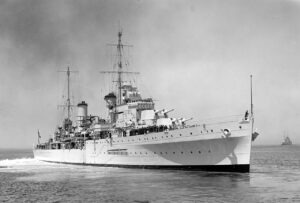
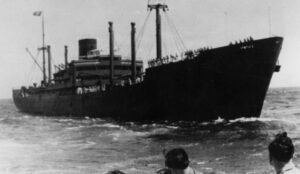 On November 19, 1941, a naval engagement took place off the coast of Western Australia between the Australian light cruiser, the HMAS Sydney, commanded by Captain Joseph Burnett, and the German auxiliary cruiser Kormoran, led by Fregattenkapitän Theodor Detmers. The encounter occurred around 106 nautical miles from Dirk Hartog Island. The battle, which was a one-on-one confrontation, lasted for thirty minutes, resulting in the destruction of both vessels.
On November 19, 1941, a naval engagement took place off the coast of Western Australia between the Australian light cruiser, the HMAS Sydney, commanded by Captain Joseph Burnett, and the German auxiliary cruiser Kormoran, led by Fregattenkapitän Theodor Detmers. The encounter occurred around 106 nautical miles from Dirk Hartog Island. The battle, which was a one-on-one confrontation, lasted for thirty minutes, resulting in the destruction of both vessels.
Beginning November 24th, following the failure of the Sydney to return to port, extensive air and sea searches were initiated. Survivors from the Kormoran were rescued at sea aboard boats and rafts, while others reached land at Quobba Station, situated 37 miles north of Carnarvon. In total, 318 out of the 399 Kormoran crew members survived. Debris from the Sydney was discovered, but none of the 645 crew members survived. This event marked the most devastating loss of life in the Royal Australian Navy’s history, the largest loss of an Allied warship with all hands during World War II and dealt a severe blow to Australian wartime morale. The fate of the Sydney was revealed to Australian authorities through the Kormoran survivors, who were detained in prisoner of war camps until the end of the war.
The HMAS Sydney, a Modified Leander class light cruiser, was one of three in the Royal Australian Navy (RAN). It was originally constructed for the Royal Navy, but it was acquired by the Australian government as a  replacement for the HMAS Brisbane and commissioned into the RAN in September 1935. Measuring 562 feet 4 inches in length, the Sydney had a displacement of 9,080 tons (8,940 long tons). Its primary armament consisted of eight 6-inch guns across four twin turrets, designated “A” and “B” at the front and “X” and “Y” at the rear. Additionally, it was equipped with four 4-inch anti-aircraft guns, nine .303-inch machine guns, and eight 21-inch torpedo tubes arranged in two quadruple mountings. The cruiser also housed a Supermarine Walrus amphibious aircraft.
replacement for the HMAS Brisbane and commissioned into the RAN in September 1935. Measuring 562 feet 4 inches in length, the Sydney had a displacement of 9,080 tons (8,940 long tons). Its primary armament consisted of eight 6-inch guns across four twin turrets, designated “A” and “B” at the front and “X” and “Y” at the rear. Additionally, it was equipped with four 4-inch anti-aircraft guns, nine .303-inch machine guns, and eight 21-inch torpedo tubes arranged in two quadruple mountings. The cruiser also housed a Supermarine Walrus amphibious aircraft.
The Kormoran was commissioned in October 1940 and underwent modifications to reach a length of 515 feet and a gross register tonnage of 8,736. This raider was equipped with six single 5.9-inch guns…two positioned on the forecastle and quarterdeck, and the remaining two along the centerline…as its primary armament. This was complemented by two 1.46-inch anti-tank guns, five 0.79-inch anti-aircraft autocannons, and six 21-inch torpedo tubes, which included a twin above-water mount on each side and two single underwater tubes. The 5.9-inch guns were hidden behind false hull plates and cargo hatch walls that could swing open upon the command to decamouflage. The secondary armaments were mounted on hydraulic lifts concealed within the superstructure, allowing the ship to masquerade as various Allied or neutral vessels.
The battle has been the subject of much controversy, particularly in the years preceding the discovery of the two wrecks in 2008. The defeat of the purpose-built warship Sydney by the modified merchant vessel Kormoran was a topic of much speculation, inspiring numerous books and prompting two official government inquiry reports, released in 1999 and 2009.
German accounts, deemed truthful and generally accurate by Australian interrogators during the war and by most subsequent analyses, indicate that Sydney came so close to Kormoran that it forfeited the benefits of its heavier armor and superior gun range. Despite this, numerous post-war publications have speculated about an 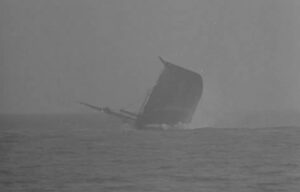
 extensive cover-up regarding Sydney’s loss, alleged violations of the laws of war by the Germans, the massacre of Australian survivors after the battle, or secret involvement by the Empire of Japan in the action (prior to its official war declaration in December). Presently, there is no evidence to substantiate these theories, leaving the battle and the loss of the two ships a mystery to this day.
extensive cover-up regarding Sydney’s loss, alleged violations of the laws of war by the Germans, the massacre of Australian survivors after the battle, or secret involvement by the Empire of Japan in the action (prior to its official war declaration in December). Presently, there is no evidence to substantiate these theories, leaving the battle and the loss of the two ships a mystery to this day.
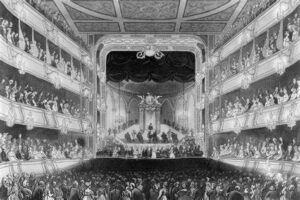
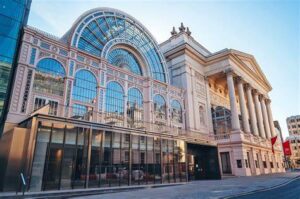 To like to dislike the opera…that is the question. I think it depends on where you live, how you were raised, and sadly, probably social status. The opera seems to be an entertainment source for the rich, while the middle class prefers concerts. That is not class discrimination, but rather it’s just an observation. Opera houses are usually very ornate and very luxurious…again catering to the kind of people who go there. One such opera house, the Royal Ballet and Opera, once known as the Royal Opera House (ROH), stands as a historic opera house and a significant venue for the performing arts in Covent Garden, central London. The expansive building is commonly referred to as Covent Garden, echoing a former use of the site. It serves as the residence of The Royal Opera, The Royal Ballet, and the Orchestra of the Royal Opera House. Initially, the site’s first theatre, Theatre Royal (1732), was predominantly a playhouse for its first century. Then, in 1734, it hosted its first ballet. The following year marked the beginning of the opera season with works by George Frideric Handel, many of which were composed expressly for Covent Garden and premiered there.
To like to dislike the opera…that is the question. I think it depends on where you live, how you were raised, and sadly, probably social status. The opera seems to be an entertainment source for the rich, while the middle class prefers concerts. That is not class discrimination, but rather it’s just an observation. Opera houses are usually very ornate and very luxurious…again catering to the kind of people who go there. One such opera house, the Royal Ballet and Opera, once known as the Royal Opera House (ROH), stands as a historic opera house and a significant venue for the performing arts in Covent Garden, central London. The expansive building is commonly referred to as Covent Garden, echoing a former use of the site. It serves as the residence of The Royal Opera, The Royal Ballet, and the Orchestra of the Royal Opera House. Initially, the site’s first theatre, Theatre Royal (1732), was predominantly a playhouse for its first century. Then, in 1734, it hosted its first ballet. The following year marked the beginning of the opera season with works by George Frideric Handel, many of which were composed expressly for Covent Garden and premiered there.
The current structure is the third theatre to occupy this site, succeeding two previous buildings that were destroyed by fires in 1808 and 1856. The façade, foyer, and auditorium remain from 1858, while nearly all other parts of the current complex stem from a comprehensive renovation in the 1990s. The main auditorium, with a seating capacity of 2,256, ranks as London’s third largest and comprises four levels of boxes, balconies, and the amphitheater gallery. The proscenium (the part of a theater stage in front of the curtain) measures 48 feet 7 inches in width, and the stage is equally deep and 40 feet in height. The main auditorium has the distinction of being a Grade I listed building.
The Theatre Royal, Covent Garden’s origins are traced to the letters patent granted by Charles II to Sir William Davenant in 1662, which permitted Davenant to run one of just two patent theatre companies (The Duke’s 
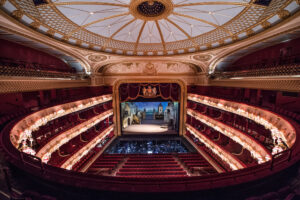 Company) in London. These letters patent was retained by the heirs of the original patentees until the 19th century. Although their location was once lost to history, they have been located and as of 2019, are preserved at the Rosenbach Museum and Library in Philadelphia. In 2024, the Royal Opera House underwent rebranding to become known as the Royal Ballet and Opera.
Company) in London. These letters patent was retained by the heirs of the original patentees until the 19th century. Although their location was once lost to history, they have been located and as of 2019, are preserved at the Rosenbach Museum and Library in Philadelphia. In 2024, the Royal Opera House underwent rebranding to become known as the Royal Ballet and Opera.

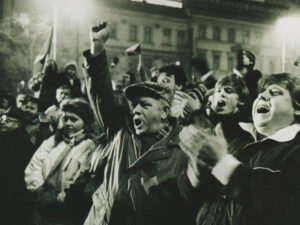 I would think that the fall of the Berlin Wall on November 17, 1989, would have signaled the end of an era of oppressive treatment of people in the area. Nevertheless, just nine days after the fall, and approximately 200 miles south, a large group of students descended into Prague, Czechoslovakia, to protest against the communist regime in their area. This demonstration sparked the onset of the Velvet Revolution, which was the peaceful overthrow of the Czechoslovak government. It was part of a wave of anti-communist revolutions that developed in the late 1980s and early 1990s.
I would think that the fall of the Berlin Wall on November 17, 1989, would have signaled the end of an era of oppressive treatment of people in the area. Nevertheless, just nine days after the fall, and approximately 200 miles south, a large group of students descended into Prague, Czechoslovakia, to protest against the communist regime in their area. This demonstration sparked the onset of the Velvet Revolution, which was the peaceful overthrow of the Czechoslovak government. It was part of a wave of anti-communist revolutions that developed in the late 1980s and early 1990s.
This wasn’t just a random protest. Protesters selected November 17th to coincide with International Students Day, marking the 50th anniversary of a Nazi assault on the University of Prague. That attack had resulted in nine deaths and the imprisonment of 1,200 students in concentration camps. The area was governed by a single communist party aligned with Moscow since World War II’s conclusion, the Czechoslovak government permitted very little anti-government expression and severely repressed opposition. Strangely, the government authorized the march on International Students Day. In recent years, as the Soviet Bloc’s economy faltered and democratic movements toppled communist governments in Poland and Hungary, anti-government sentiment has grown increasingly pronounced.
Students shouting anti-government slogans filled the streets of Bratislava and Prague. There were confrontations with the police, but officially, no fatalities were reported. Despite police crackdowns, the protests overflowed into other cities and increased rapidly. Theater employees transformed their stages into public debate platforms, and the movement swelled to encompass a diverse cross-section of society. On November 20th, half a million demonstrators gathered in Prague’s Wenceslas Square.
Shortly after the initial protests, it became clear that one-party rule in Czechoslovakia was ending. The Communist Party’s leadership stepped down on November 28th, and by December 10th, an anti-communist government had taken office. Václav Havel, a renowned writer and dissident, was elected president on December 29th, serving as Czechoslovakia’s final president. Subsequently, the Czech and Slovak regions amicably parted ways in the so-called Velvet Divorce, and in 1993, Havel became the first president of the newly established Czech Republic.
It was an amazing feat for the students. Somehow, they managed to pull off a peaceful regime change. The oppressive regime they had always known, was replaced with two free nations and peace. Peaceful revolutions 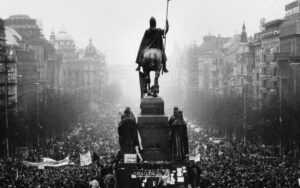
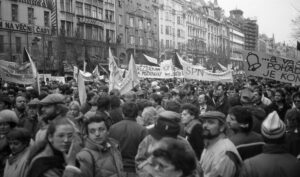 are pretty much unheard of. Dictatorships hate to relinquish their power over their helpless citizens, and typically, the students just don’t have much pull in government, although that may be changing. Nevertheless, in a time when they shouldn’t have been able to pull it off, the students of Prague, Czechoslovakia managed an unbelievable feat.
are pretty much unheard of. Dictatorships hate to relinquish their power over their helpless citizens, and typically, the students just don’t have much pull in government, although that may be changing. Nevertheless, in a time when they shouldn’t have been able to pull it off, the students of Prague, Czechoslovakia managed an unbelievable feat.
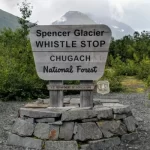
 The glacier is named in honor of Edward A Spencer, who was a general timekeeper for the Alaska Central Railway. You might think it strange to name a glacier after a timekeeper for the railroad, but there is a reason the glacier took on his name.
The glacier is named in honor of Edward A Spencer, who was a general timekeeper for the Alaska Central Railway. You might think it strange to name a glacier after a timekeeper for the railroad, but there is a reason the glacier took on his name.
On November 16, 1905, Spencer set out to hike the trail from Camp 52 to Camp 55, through the region now known as the glacier named after him. Despite the nighttime journey, Spencer was reportedly sure of his ability 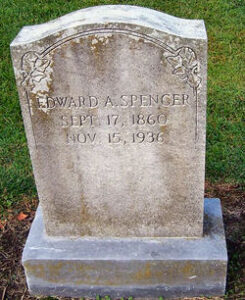 to complete the trek. Unfortunately, Spencer fell into a crevasse within the glacier while traveling alone at night. A year later, his remains, along with his travel gear and documents, were discovered. In 1909, the United States Geological Survey honored his memory by naming the glacier after him.
to complete the trek. Unfortunately, Spencer fell into a crevasse within the glacier while traveling alone at night. A year later, his remains, along with his travel gear and documents, were discovered. In 1909, the United States Geological Survey honored his memory by naming the glacier after him.
Edward A. Spencer was a key figure in the development of Alaska’s railway system, his story is intertwined with the stark challenges faced by those who labored to construct the Alaska Central Railroad. As a timekeeper for the railroad, Spencer’s role was essential. Following his death, U.S. Grant and D.F. Higgins from the U.S. Geological Survey (USGS) named the glacier “Spencer Glacier” the massive ice formation in Alaska after Edward Spencer in 1909. Spencer Glacier originates in the Kenai Mountains, about 6 miles south of Carpathian Peak, and extends northwest to the southern tip of the Placer River Valley, roughly 20 miles southeast of Sunrise in the Chugach Mountains. Spencer Glacier ascends 3,500 feet like a magnificent natural ramp from a lake dotted with royal-blue icebergs in the Chugach National Forest, located just 60 miles south of Anchorage. This ice-age landscape is both rugged and ancient, with peaks reaching a mile high, sheer cliff rising above 
 gravel outwash plains, and the stunning sights of waterfalls and braided rivers. Eighty percent of an iceberg is below the water, mushrooming and shelving out beneath the surface, making it much larger than it appears. This lake can reach depths of up to 400 feet, and the glacier wall at the edge of the lake is estimated to be 300 feet deep. The beauty of Spencer lies in its pristine wilderness setting. With no roads leading in, the only access is by rail.
gravel outwash plains, and the stunning sights of waterfalls and braided rivers. Eighty percent of an iceberg is below the water, mushrooming and shelving out beneath the surface, making it much larger than it appears. This lake can reach depths of up to 400 feet, and the glacier wall at the edge of the lake is estimated to be 300 feet deep. The beauty of Spencer lies in its pristine wilderness setting. With no roads leading in, the only access is by rail.
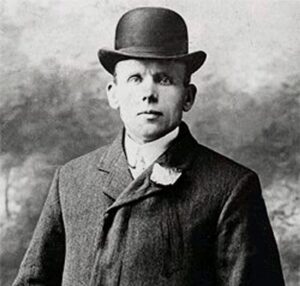 On November 15, 1884, a woman named Ellen Keyse was found dead in a pantry next to John Lee’s room. Ellen Keyse was a rich older woman for whom Lee had worked. Keyse’s murder was brutal. Her head was severely battered and her throat cut. There was no direct evidence of Lee’s guilt, and in fact, the case was made solely on circumstantial evidence. The alleged motive was Lee’s resentment at Keyse’s supposed mean treatment. Lee insisted he was innocent. He had been convicted and sentenced to death by hanging.
On November 15, 1884, a woman named Ellen Keyse was found dead in a pantry next to John Lee’s room. Ellen Keyse was a rich older woman for whom Lee had worked. Keyse’s murder was brutal. Her head was severely battered and her throat cut. There was no direct evidence of Lee’s guilt, and in fact, the case was made solely on circumstantial evidence. The alleged motive was Lee’s resentment at Keyse’s supposed mean treatment. Lee insisted he was innocent. He had been convicted and sentenced to death by hanging.
On February 23, 1885, Lee, who was just 19 years old is, was sent to the gallows in Exeter, England, for Keyse’s murder. It seemed that no matter how hard he had tried to prove his innocence, it was all for not, and his life was over. However, after the noose was placed around his neck, the lever that would release the floor beneath his feet was pulled, and something malfunctioned. Lee was not dropped, even though the equipment had been tested and found to be in working order. It was shocking!! The weights in the test plummeted to the ground as anticipated. Despite two additional attempts at hanging, Lee remained standing on the trap door when the lever was pulled, and it failed to open. Not sure what to make of the situation, the guards returned Lee to prison.
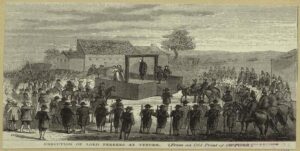 Since everything worked fine with weights, the authorities got a little nervous about the inexplicable malfunction, and they decided to attribute the whole thing to an act of God. Lee was removed from death row, his sentence commuted, and he spent the next 22 years in prison. Once he was released, Lee emigrated to America. They tested the gallows again and still found no cause for Lee’s remarkable reprieve. These days condemned prisoners don’t have a chance to receive such reprieves. No one is hanged anymore. Most people are executed by lethal injection. Even when there are mishaps in carrying out an execution, such as the case when an executioner failed to properly find a vein for a lethal injection, the authorities will try again, until the prisoner has been put to death.
Since everything worked fine with weights, the authorities got a little nervous about the inexplicable malfunction, and they decided to attribute the whole thing to an act of God. Lee was removed from death row, his sentence commuted, and he spent the next 22 years in prison. Once he was released, Lee emigrated to America. They tested the gallows again and still found no cause for Lee’s remarkable reprieve. These days condemned prisoners don’t have a chance to receive such reprieves. No one is hanged anymore. Most people are executed by lethal injection. Even when there are mishaps in carrying out an execution, such as the case when an executioner failed to properly find a vein for a lethal injection, the authorities will try again, until the prisoner has been put to death.
Lee maintained his innocence until his death. Following his release, he appeared to capitalize on his fame, earning a living through lectures about his life and even becoming the subject of a silent film. The details of his 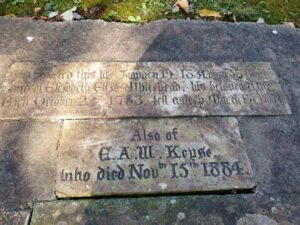
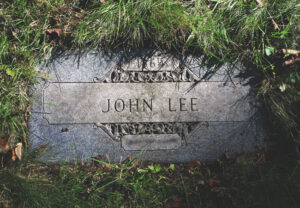 life post-1916 are murky, with some speculation that multiple individuals later claimed to be him. It was once believed he died in a Tavistock workhouse during World War II. However, newer research suggests that he died in the United States as “James Lee” in 1945. The book “The Man They Could Not Hang” states that Lee’s gravestone was found at Forest Home Cemetery in Milwaukee in 2009.
life post-1916 are murky, with some speculation that multiple individuals later claimed to be him. It was once believed he died in a Tavistock workhouse during World War II. However, newer research suggests that he died in the United States as “James Lee” in 1945. The book “The Man They Could Not Hang” states that Lee’s gravestone was found at Forest Home Cemetery in Milwaukee in 2009.
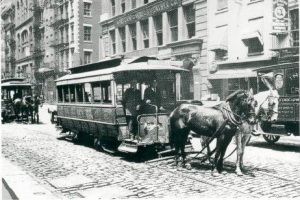
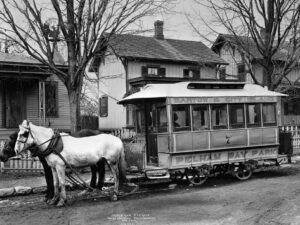 These days, we all know what mass transit is. It’s about taking a trip on a plane, train, ship, or even a bus. Certainly, trains existed prior to 1832, but they were not designed for cross-town travel back then. On November 14, 1832, all that changed when the New York and Harlem Railroad in New York City introduced the nation’s first horse-drawn streetcar. The streetcar service was launched on the Bowery and Fourth Avenue in Manhattan, spanning from Prince to 14th Street, and with that, it became the city’s inaugural mass transit system. The fare for a ride was set at 12.5 cents.
These days, we all know what mass transit is. It’s about taking a trip on a plane, train, ship, or even a bus. Certainly, trains existed prior to 1832, but they were not designed for cross-town travel back then. On November 14, 1832, all that changed when the New York and Harlem Railroad in New York City introduced the nation’s first horse-drawn streetcar. The streetcar service was launched on the Bowery and Fourth Avenue in Manhattan, spanning from Prince to 14th Street, and with that, it became the city’s inaugural mass transit system. The fare for a ride was set at 12.5 cents.
The streetcar was named “John Mason” after the President of Chemical Bank, a prosperous New York businessman and railroad co-founder who financed its creation. It was essentially a horse-drawn bus with seating for about a dozen passengers. However, as reported by the New York Herald, this did not deter people from crowding in, “People are packed into streetcars like sardines in a box, with perspiration for oil. The seats being more than filled, the passengers are placed in rows down the middle, where they hang on by the straps, like smoked hams in a corner grocery.” No one thought about the problems, and in fact dangers of overcrowding, and as it turns out those dangers did not materialize anyway, so the ride, overcrowding and all, was a beloved pastime.
Horse-drawn carriages had always existed in New York City, but the omnibus was different because it ran along a designated route and was a more affordable option. “Omni” meant the bus carried everyone and anyone. The ride was cushioned with steel springs, but wheels were solid metal and wood. I can imagine the rough ride its passengers must have experienced, and the amount of effort needed by the draft animals to pull the oversize coaches along New York City’s cobblestone, unfinished, and litter-strewn streets. While riding was a trick sometimes, getting off was just as strange. To signal their desire to disembark from the large stagecoach, passengers would pull on a leather strap connected to the driver’s ankle. Imagine how annoying that constant pulling on the ankle must have been for the driver. I suppose he got used to it, but to me it seems like it would be a huge annoyance.
The next step took over 50 years, but in 1883, New York saw its first steam-powered streetcar, which replaced 
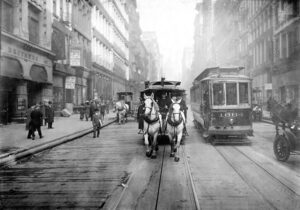 the horse-drawn omnibus. From there, change was rapid. By 1909, electric trolleys were introduced to the city. Even the local baseball team got in on the streetcar craze. Baseball historians tell of the Brooklyn Dodgers, originally the “Trolley Dodgers,” who earned their name because the borough’s baseball team fans quite often had to navigate through busy streetcar traffic.
the horse-drawn omnibus. From there, change was rapid. By 1909, electric trolleys were introduced to the city. Even the local baseball team got in on the streetcar craze. Baseball historians tell of the Brooklyn Dodgers, originally the “Trolley Dodgers,” who earned their name because the borough’s baseball team fans quite often had to navigate through busy streetcar traffic.

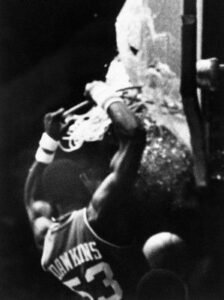 It became an almost commonplace practice for a while, but it really wasn’t a safe practice or an acceptable practice. A backboard shattering, also referred to as backboard breaking or smashing, is an accident or deliberate stunt in basketball. It happens when a player slam dunks with enough force to break the tempered glass backboard, which may also result in the hoop detaching. This event typically leads to game cancellations or delays, a foul against the player responsible, potential serious injuries, and significant cleanup and replacement costs. The act of shattering a backboard is hazardous, as it propels small shards of glass over the players, sideline press, referees, and spectators. Nevertheless, On November 13, 1979, during a game at the Municipal Auditorium in Kansas City, Philadelphia 76ers center Darryl Dawkins soared over Kansas City Kings forward Bill Robinzine and executed a slam dunk that shattered the fiberglass backboard. Witnesses described the noise as resembling a bomb detonating on the court. Glass shards scattered everywhere, cutting Robinzine’s arms and legs and embedding in Dr. J’s Afro. Dawkins later remarked, “It wasn’t really safe, but it was a Darryl Dawkins thing to do.” It also wasn’t the first time it happened. Chuck Connors, who would later gain fame as an actor in “The Rifleman,” was the first NBA player to shatter a backboard, not with a dunk but with a set shot. While playing for the Boston Celtics in 1946, during pregame warmups, Connors’ shot hit the front of the rim. The backboard shattered because an arena worker had neglected to install a protective piece between the rim and the backboard. I can only imagine his shock.
It became an almost commonplace practice for a while, but it really wasn’t a safe practice or an acceptable practice. A backboard shattering, also referred to as backboard breaking or smashing, is an accident or deliberate stunt in basketball. It happens when a player slam dunks with enough force to break the tempered glass backboard, which may also result in the hoop detaching. This event typically leads to game cancellations or delays, a foul against the player responsible, potential serious injuries, and significant cleanup and replacement costs. The act of shattering a backboard is hazardous, as it propels small shards of glass over the players, sideline press, referees, and spectators. Nevertheless, On November 13, 1979, during a game at the Municipal Auditorium in Kansas City, Philadelphia 76ers center Darryl Dawkins soared over Kansas City Kings forward Bill Robinzine and executed a slam dunk that shattered the fiberglass backboard. Witnesses described the noise as resembling a bomb detonating on the court. Glass shards scattered everywhere, cutting Robinzine’s arms and legs and embedding in Dr. J’s Afro. Dawkins later remarked, “It wasn’t really safe, but it was a Darryl Dawkins thing to do.” It also wasn’t the first time it happened. Chuck Connors, who would later gain fame as an actor in “The Rifleman,” was the first NBA player to shatter a backboard, not with a dunk but with a set shot. While playing for the Boston Celtics in 1946, during pregame warmups, Connors’ shot hit the front of the rim. The backboard shattered because an arena worker had neglected to install a protective piece between the rim and the backboard. I can only imagine his shock.
When 6’10”, 260-pound Dawkins joined the 76ers in 1975, he was the first NBA player drafted directly from high school. His nickname, reportedly bestowed on him by Stevie Wonder, was “Chocolate Thunder.” His aim was to become the league’s most entertaining player. His slam dunks, huge crowd-pleasers, and he named them all: “the In-Your-Face Disgrace, Look Out Below, Turbo Sexophonic Delight, Rim-Wrecker, Go-Rilla, Spine Chiller Supreme, Cover Your Head, Yo Mama, and his personal favorite, the Get-Out-of-the-Waying, Backboard-Swaying, Game-Delaying, If-You-Ain’t-Grooving-You-Best-Get-Moving Dunk.” His notorious Kansas City backboard shattering dunk was aptly named “the Chocolate-Thunder-Flying, Robinzine-Crying, Teeth-Shaking, Glass-Breaking, Rump-Roasting, Bun-Toasting, Wham-Bam Glass-Breaker-I-Am Jam.”
Apparently, he liked this showiness, because a few weeks later, Dawkins shattered another backboard, this time at the Philadelphia Spectrum. Following this incident, NBA Commissioner Larry O’Brien summoned the young player to his office and issued a stern warning: for each backboard Dawkins broke, he would face a $5,000 fine and suspension. While the dramatic dunks were generating publicity for the NBA, which was then facing difficulties, they also led to lengthy game delays as janitors cleaned up the broken glass, not to mention the inherent danger. Consequently, the league decided to equip every arena with shatterproof backboards and breakaway rims. If you can’t stop the players from this risky behavior, you make it impossible to perform.
Darryl Dawkins’ iconic backboard-shattering dunks are some of the most memorable moments from an 
 especially exuberant era in NBA history. I don’t think there is one person who hasn’t see a replay or two. He continued his basketball career in Italy, where he broke several backboards that were not Dawkins-proof and later coached the Pennsylvania Valley Dawgs in the United States Basketball League. Dawkins was born in Orlando, Florida, on January 11, 1957, to Harriet James and Frank Dawkins. His grandmother Amanda Celestine Jones was fond of the young Darryl and personally raised him. Dawkins passed away in 2015, at the age of 58
especially exuberant era in NBA history. I don’t think there is one person who hasn’t see a replay or two. He continued his basketball career in Italy, where he broke several backboards that were not Dawkins-proof and later coached the Pennsylvania Valley Dawgs in the United States Basketball League. Dawkins was born in Orlando, Florida, on January 11, 1957, to Harriet James and Frank Dawkins. His grandmother Amanda Celestine Jones was fond of the young Darryl and personally raised him. Dawkins passed away in 2015, at the age of 58
 When weather gets ugly, and things end up in really bad shape, the blame often falls on the disaster crew trying to help. The 1970 Bhola cyclone, which was also referred to as the Great Cyclone of 1970, was a catastrophic tropical cyclone that hit East Pakistan (now Bangladesh) and West Bengal in India on November 12, 1970. It was also a prime example of the blame game. The 1970 Bhola Cyclone was the deadliest tropical cyclone on record and one of the most lethal natural disasters in history. The death toll from the storm was at least 300,000, with estimates reaching up to 500,000, largely due to the storm surge that inundated the low-lying islands of the Ganges Delta. Bhola was the most intense and the sixth cyclonic storm of the 1970 North Indian Ocean cyclone season.
When weather gets ugly, and things end up in really bad shape, the blame often falls on the disaster crew trying to help. The 1970 Bhola cyclone, which was also referred to as the Great Cyclone of 1970, was a catastrophic tropical cyclone that hit East Pakistan (now Bangladesh) and West Bengal in India on November 12, 1970. It was also a prime example of the blame game. The 1970 Bhola Cyclone was the deadliest tropical cyclone on record and one of the most lethal natural disasters in history. The death toll from the storm was at least 300,000, with estimates reaching up to 500,000, largely due to the storm surge that inundated the low-lying islands of the Ganges Delta. Bhola was the most intense and the sixth cyclonic storm of the 1970 North Indian Ocean cyclone season. 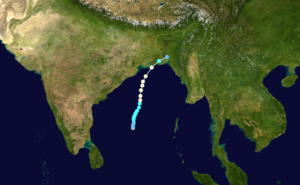
A cyclone developed over the central Bay of Bengal on November 8th and moved northwards, gaining strength along the way. It peaked with winds of 115 mph on November 10 and struck the coast of East Pakistan the next afternoon. The resulting storm surge demolished numerous offshore islands, wiping out villages and decimating crops across the area. In Tazumuddin, the upazila (sub-district) hardest hit, the storm claimed the lives of more than 45% of its 167,000 residents. The death toll was just shocking.
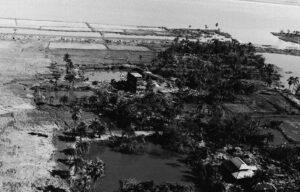 The Pakistani administration, under the leadership of General Yahya Khan, faced criticism for its slow response to relief efforts after the storm from both East Pakistani political figures and international media. Of course, the media doesn’t always understand the logistics concerned in such a rescue effort. This inadequate and biased response from the government of West Pakistan contributed to growing disenchantment among the people of East Pakistan, which enabled the opposition Awami League to secure a decisive victory in the provincial elections the following month and also led to the Bangladesh Liberation War seven months later. This was most likely a clear showing of weather making history.
The Pakistani administration, under the leadership of General Yahya Khan, faced criticism for its slow response to relief efforts after the storm from both East Pakistani political figures and international media. Of course, the media doesn’t always understand the logistics concerned in such a rescue effort. This inadequate and biased response from the government of West Pakistan contributed to growing disenchantment among the people of East Pakistan, which enabled the opposition Awami League to secure a decisive victory in the provincial elections the following month and also led to the Bangladesh Liberation War seven months later. This was most likely a clear showing of weather making history.
 The name was originally Armistice Day, but now is known as Remembrance Day in the Commonwealth of England and Veterans Day in the United States. It is observed annually on November 11th. This day marks the armistice signed at Compiègne, France, between the Allies of World War I and Germany at 5:45am, leading to the end of hostilities on the Western Front, effective from 11:00am…the “eleventh hour of the eleventh day of the eleventh month” in 1918. Despite this, Thomas R Gowenlock, a US First Division intelligence officer, reported that shelling continued throughout the day, ceasing only at nightfall. The armistice, initially set for 36 days, required several extensions until the formal peace agreement with the Treaty of Versailles was signed the following year. In celebration of the day, “Legally, two minutes of silence is recommended to be observed at 2:11pm Eastern Standard Time.”
The name was originally Armistice Day, but now is known as Remembrance Day in the Commonwealth of England and Veterans Day in the United States. It is observed annually on November 11th. This day marks the armistice signed at Compiègne, France, between the Allies of World War I and Germany at 5:45am, leading to the end of hostilities on the Western Front, effective from 11:00am…the “eleventh hour of the eleventh day of the eleventh month” in 1918. Despite this, Thomas R Gowenlock, a US First Division intelligence officer, reported that shelling continued throughout the day, ceasing only at nightfall. The armistice, initially set for 36 days, required several extensions until the formal peace agreement with the Treaty of Versailles was signed the following year. In celebration of the day, “Legally, two minutes of silence is recommended to be observed at 2:11pm Eastern Standard Time.”

Originally set for November 11th annually, Veterans Day was shifted to the fourth Monday of October starting in 1971, due to the Uniform Monday Holiday Act. This change occurred on October 25, 1971; October 23, 1972; October 22, 1973; October 28, 1974; October 27, 1975; October 25, 1976, and October 24, 1977. However, in 1978, the observance was returned to its original date of November 11th, mainly because its date had significance too. Although the official holiday is still on November 11th, if it falls on a weekend, federal employees and various organizations observe the holiday on the adjacent Friday or Monday.
Veterans Day, the federal holiday in the United States, is observed annually on November 11th to honor military veterans from the United States Armed Forces. Veterans Day is distinct from Memorial Day, a US public holiday in May: Veterans Day commemorates the service of all US veterans, while Memorial Day specifically honors those who have died while in military service. Another military holiday that also occurs in May, Armed Forces Day, honors those currently serving in the US military. Additionally, Women Veterans Day is recognized by a growing number of US states that specifically honor women who have served in the US military.

While the holiday is commonly printed as Veteran’s Day or Veterans’ Day in calendars and advertisements, the United States Department of Veterans Affairs website states that the attributive (no apostrophe) rather than the possessive case is the official spelling “because it is not a day that ‘belongs’ to veterans, it is a day for honoring all veterans.” I find that very informative, because I have always struggled with where that apostrophe was supposed to go…silly as that may sound. I like that it is actually no apostrophe to honor all veterans. So, to our veterans, Happy Veterans Day!!

 Ok, so you bought a car. You already know, I’m sure, that there are many things your car will need. You just hope that it will be…eventually. With the introduction of the automobile, came the need for parts…lots of parts. On of the parts that might seem insignificant…until it rains anyway, is the windshield wipers. Nevertheless, after those first cars were invented, and the rain, snow, and sleet moved in, the windshield wiper became very important. Enter Mary Anderson. Mary was a woman from Birmingham, Alabama, who came up with her “window cleaning device for electric cars and other vehicles to remove snow, ice or sleet from the window.” The product was very unique, and the patent office awarded US Patent Number 743,801 to Mary for her work. Upon receiving her patent, Anderson attempted to sell it to a Canadian manufacturer, but the firm declined, stating the device lacked prac9tical value and was not monetarily worthwhile. Despite mechanical windshield wipers becoming standard in passenger vehicles by approximately 1913, Anderson did not profit from her invention.
Ok, so you bought a car. You already know, I’m sure, that there are many things your car will need. You just hope that it will be…eventually. With the introduction of the automobile, came the need for parts…lots of parts. On of the parts that might seem insignificant…until it rains anyway, is the windshield wipers. Nevertheless, after those first cars were invented, and the rain, snow, and sleet moved in, the windshield wiper became very important. Enter Mary Anderson. Mary was a woman from Birmingham, Alabama, who came up with her “window cleaning device for electric cars and other vehicles to remove snow, ice or sleet from the window.” The product was very unique, and the patent office awarded US Patent Number 743,801 to Mary for her work. Upon receiving her patent, Anderson attempted to sell it to a Canadian manufacturer, but the firm declined, stating the device lacked prac9tical value and was not monetarily worthwhile. Despite mechanical windshield wipers becoming standard in passenger vehicles by approximately 1913, Anderson did not profit from her invention.
As the story goes, “on a freezing, wet winter day around the turn of the century, Mary Anderson was riding a streetcar on a visit to New York City when she noticed that the driver could hardly see through his sleet-encrusted front windshield. Although the trolley’s front window was designed for bad-weather visibility—it was split into parts so that the driver could open it, moving the snow- or rain-covered section out of his line of vision—in fact the multi-pane windshield system worked very poorly. It exposed the driver’s uncovered face (not to mention all the passengers sitting in the front of the trolley) to the inclement weather, and did not improve his ability to see where he was going in any case.”
Mary Anderson’s invention solved this problem for everyone. With a simple flip of a switch, the wipers kick in, and our windshields are clean and dry. Yes, they wear out sometimes, and many people would say that they 
 don’t last as long as they should, but try to do much driving in the rain or snow without them. Many parts, some much more expensive don’t last long either. It’s better to have a set of almost worn-out wiper blades than to have none at all. Many people would have expected an automobile invention to come from a man, but not in this case. So the next time you use your wiper blades, you can thank Mary.
don’t last as long as they should, but try to do much driving in the rain or snow without them. Many parts, some much more expensive don’t last long either. It’s better to have a set of almost worn-out wiper blades than to have none at all. Many people would have expected an automobile invention to come from a man, but not in this case. So the next time you use your wiper blades, you can thank Mary.

